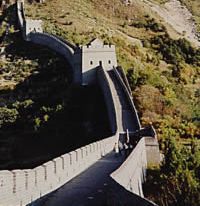Tianjin, also known as the diamond of the Bohai Gulf and the gateway to the capital of the People's Republic of  China, is one of the biggest industrial and port cities in China. The city has a long and illustrious history, and the marks that the past has imprinted upon the place can still be seen today, albeit in diminished, and diminishing, form. For the visitor today, this legacy can still be glimpsed, in the varied and beautiful architecture of the old concessionary areas, amongst the foibles and antiques to be found in the winding streets of the antique market, and with visits to the profusion of religious buildings that litter the city. China, is one of the biggest industrial and port cities in China. The city has a long and illustrious history, and the marks that the past has imprinted upon the place can still be seen today, albeit in diminished, and diminishing, form. For the visitor today, this legacy can still be glimpsed, in the varied and beautiful architecture of the old concessionary areas, amongst the foibles and antiques to be found in the winding streets of the antique market, and with visits to the profusion of religious buildings that litter the city.
Notable history of the city began with the excavation of the Grand Canal in the Sui Dynasty (581-618). At this time, Tianjin was considered to be one of China's most important military fortresses. Any "aliens" would have to get through Tianjin for direct access to the capital, a mere 80km to the west. The city, starting in the mid-Tang (618-907), also became known as the transportation route, via canal, of most food and silk from the north to the south. In 1860, after the First Opium War, Tianjin was further expanded as a business and communications center. By the end of the 19th century, it had grown into a bustling center with a population of approximately 300,000 citizens. As a result of the Peking Treaty signed in the wake of the Second Opium War, Tianjin became an open port for foreign trade with concession areas earmarked for foreign residents of various countries.
The 20th century has witnessed earth-shaking changes in Tianjin, three successive wars (Democratic Revolution in the 1910s, Anti-Japanese War from the mid-1930s to mid-1940s and the civil war immediately afterwards) and a devastating earthquake in 1976 were to change the face of Tianjin forever. The turbulence of this period was to greatly slow the economic pace of the city and it was not until the end of the Cultural Revolution, as the dust of the earthquake settled, that Tianjin got back on track. Foreign and domestic money pored in to the municipality, especially after the establishment of the Tianjin Economic and Technological Zone. Nowadays it is the future that is driving the look of Tianjin, with many of the old architecture making way for modern buildings. |
